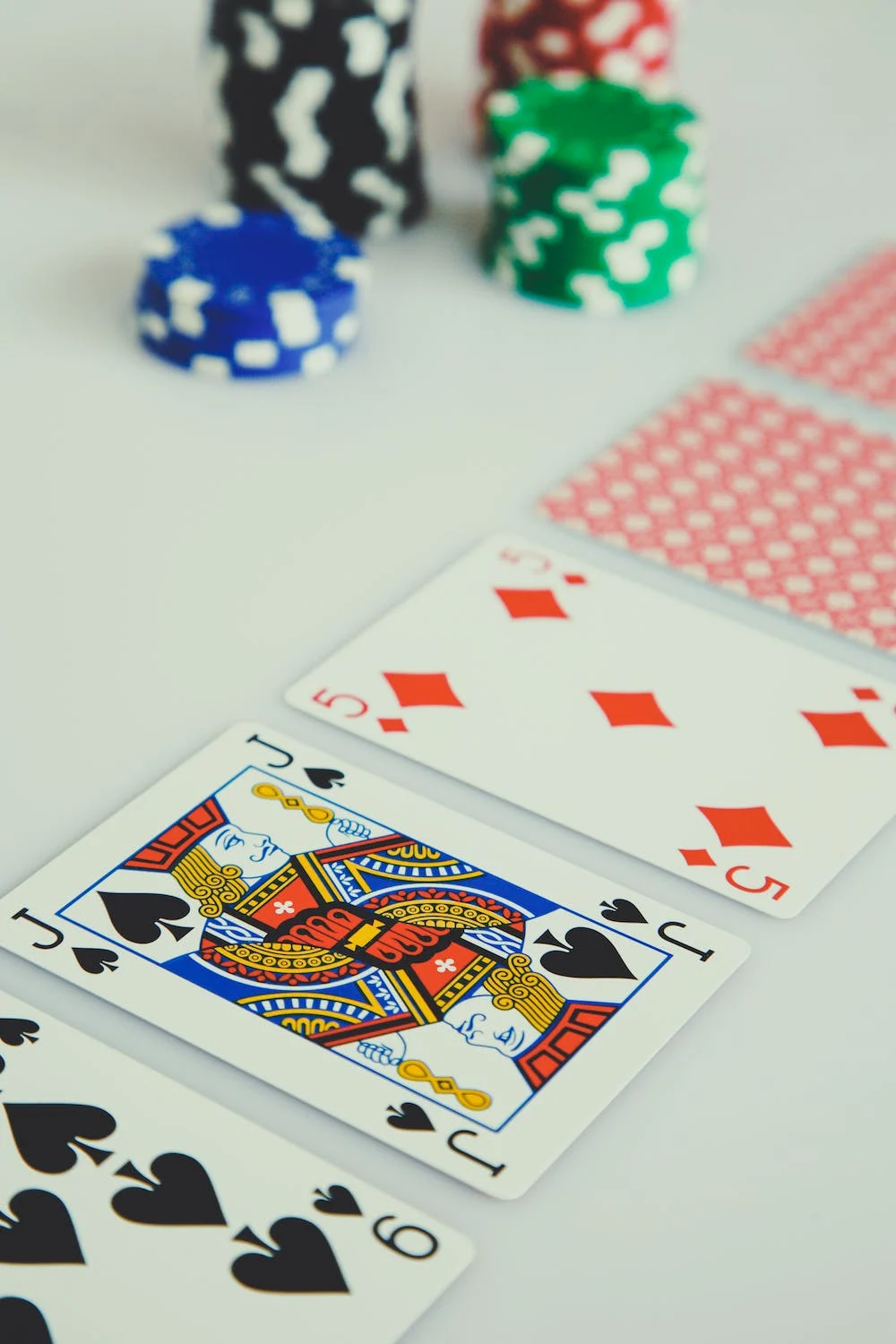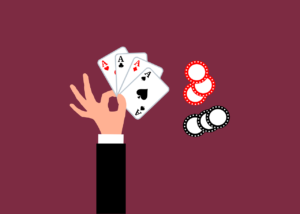Live poker is a game of skill and strategy, and one of the most important aspects of the game is the ability to read your opponents’ tells and body language. By observing their behavior and movements, you can gain valuable insights into their hand strength, confidence, and overall playing style. In this article, we will explore some of the key tells and body language cues to look out for in live poker games, and how to use this information to your advantage at the table.
Mastering the Art of Reading Poker Tells in Live Games
It is essential to understand what a tell is. A tell is a physical or verbal clue that a player gives away, indicating the strength or weakness of their hand. Tells can be subtle or obvious, and they can be intentional or unintentional. Some common tells include facial expressions, body language, and betting patterns.
Facial expressions are one of the most common tells in poker. A player’s face can reveal a lot about their hand. For example, if a player has a strong hand, they may have a relaxed and confident expression. On the other hand, if a player has a weak hand, they may have a nervous or anxious expression. It is essential to pay attention to your opponents’ facial expressions throughout the game to pick up on any tells.
Body language is another crucial aspect of reading tells in poker. A player’s body language can reveal a lot about their hand. For example, if a player is sitting up straight and leaning forward, they may have a strong hand. On the other hand, if a player is slouching and looking away from the table, they may have a weak hand. It is essential to pay attention to your opponents’ body language throughout the game to pick up on any tells.
Betting patterns are also an essential aspect of reading tells in poker. A player’s betting patterns can reveal a lot about their hand. For example, if a player is betting aggressively, they may have a strong hand. On the other hand, if a player is betting cautiously, they may have a weak hand. It is essential to pay attention to your opponents’ betting patterns throughout the game to pick up on any tells.
It is also essential to understand that tells can be misleading. Some players may intentionally give off false tells to deceive their opponents. Therefore, it is essential to consider all aspects of the game, including the cards on the table and the betting patterns of your opponents, before making any decisions based on tells.
In conclusion, reading tells and body language in live poker games can give you a significant advantage over your opponents. Paying attention to your opponents’ facial expressions, body language, and betting patterns can help you pick up on any tells and make more informed decisions. However, it is essential to remember that tells can be misleading, and it is crucial to consider all aspects of the game before making any decisions based on tells. With practice and experience, you can master the art of reading poker tells in live games and improve your chances of winning.
Body Language Secrets: How to Spot Bluffs and Tells in Live Poker
Live Poker: How to Read Tells and Body Language
One of the most important things to remember when reading tells is that everyone has their own unique tells. There is no one-size-fits-all approach to reading tells. However, there are some common tells that can be useful to know.
One of the most common tells is the “nervous twitch.” This is when a player fidgets or twitches when they have a strong hand. This can be a sign that they are excited about their hand and are trying to contain their excitement. Conversely, if a player is fidgeting or twitching when they have a weak hand, it can be a sign that they are nervous and trying to hide their weakness.
Another common tell is the “stare down.” This is when a player stares at their opponent for an extended period of time. This can be a sign that they are trying to intimidate their opponent or that they are trying to read their opponent’s body language. If a player is staring at their opponent when they have a strong hand, it can be a sign that they are confident and trying to intimidate their opponent. If a player is staring at their opponent when they have a weak hand, it can be a sign that they are trying to read their opponent’s body language to see if they are bluffing.
One of the most important things to remember when reading tells is to look for patterns. If a player consistently does the same thing when they have a strong hand, it can be a sign that they have a tell. Conversely, if a player consistently does the same thing when they have a weak hand, it can be a sign that they have a tell.
Another important thing to remember when reading tells is to pay attention to the context of the game. If a player is playing in a high-stakes game, they may be more likely to bluff or try to intimidate their opponents. Conversely, if a player is playing in a low-stakes game, they may be more likely to play conservatively and avoid taking risks.
In addition to reading tells, it is also important to pay attention to body language. Body language can be a powerful tool in live poker, as it can reveal a player’s emotions and intentions. For example, if a player is slouching in their chair, it can be a sign that they are feeling defeated or discouraged. Conversely, if a player is sitting up straight and leaning forward, it can be a sign that they are feeling confident and focused.
Another important aspect of body language to pay attention to is eye contact. If a player avoids eye contact, it can be a sign that they are trying to hide something or that they are feeling nervous. Conversely, if a player maintains eye contact, it can be a sign that they are confident and focused.
In conclusion, reading tells and body language is an important skill for any live poker player. By paying attention to patterns, context, and body language, players can gain an edge in the game and make better decisions. However, it is important to remember that everyone has their own unique tells, and there is no one-size-fits-all approach to reading tells. With practice and experience, players can become more skilled at reading tells and using body language to their advantage.
Live Poker Tells: The Ultimate Guide to Reading Your Opponents
Firstly, it is important to understand what a tell is. A tell is a physical or verbal cue that a player gives off, which can reveal information about the strength or weakness of their hand. Tells can be intentional or unintentional, and they can be subtle or obvious. Some common tells include shaking hands, fidgeting, avoiding eye contact, and changes in breathing patterns.
Body language is another important aspect of reading your opponents. A player’s body language can reveal a lot about their confidence, nervousness, and overall demeanor. For example, a player who is slouching in their chair and avoiding eye contact may be feeling nervous or unsure of themselves. On the other hand, a player who is sitting up straight and making direct eye contact may be feeling confident and in control.
So, how can you use this information to your advantage in a live poker game? The key is to observe your opponents closely and look for patterns in their behavior. Pay attention to their facial expressions, body language, and any verbal cues they may give off. If you notice that a player always looks away when they have a weak hand, for example, you can use this information to your advantage by bluffing more often when they do this.
It is also important to remember that tells and body language can be misleading. Just because a player is exhibiting nervous behavior does not necessarily mean they have a weak hand. They may be trying to throw you off or bluffing themselves. This is why it is important to observe your opponents over a period of time and look for patterns in their behavior.
Another important aspect of reading tells and body language is to be aware of your own behavior. You do not want to give off any tells yourself that could reveal information about the strength of your hand. This means avoiding nervous behavior, maintaining a neutral facial expression, and controlling your breathing.
In conclusion, reading tells and body language is an essential skill for any live poker player. By observing your opponents closely and looking for patterns in their behavior, you can gain valuable information about the strength of their hand. However, it is important to remember that tells and body language can be misleading, so it is important to observe your opponents over a period of time and look for consistent patterns in their behavior. With practice and experience, you can become a master at reading tells and body language in live poker games.
The Psychology of Poker Tells: Understanding Your Opponents’ Behavior
The first step in reading tells is to observe your opponents. Pay attention to their body language, facial expressions, and tone of voice. Look for any signs of nervousness, confidence, or hesitation. These can all be indicators of the strength or weakness of their hand.
One of the most common tells in poker is the shaking hand. If your opponent’s hand is shaking, it could be a sign of nervousness or excitement. This could mean that they have a strong hand or are bluffing. Similarly, if your opponent is fidgeting or tapping their foot, it could be a sign of anxiety or impatience. This could indicate that they are unsure of their hand or are trying to hide their nervousness.
Another tell to look out for is eye contact. If your opponent avoids eye contact, it could be a sign of weakness. They may be trying to avoid giving away any information about their hand. On the other hand, if your opponent maintains eye contact, it could be a sign of confidence. They may be trying to intimidate you or bluff their way through the hand.
Facial expressions can also be a valuable source of information. If your opponent is smiling or laughing, it could be a sign of confidence or a strong hand. However, if they are frowning or grimacing, it could be a sign of weakness or frustration. Similarly, if your opponent is biting their lip or chewing on their nails, it could be a sign of nervousness or anxiety.
It’s important to note that not all tells are reliable indicators of your opponent’s hand. Some players may intentionally give off false tells to deceive their opponents. This is known as a reverse tell, and it can be a powerful tool in the right hands. For example, a player may act nervous or hesitant when they have a strong hand to make their opponents think they are bluffing.
To avoid falling for reverse tells, it’s important to look for patterns in your opponent’s behavior. If they consistently exhibit the same tells in similar situations, it’s more likely that they are genuine. However, if their behavior seems inconsistent or erratic, it could be a sign that they are trying to deceive you.
In addition to reading tells, it’s important to be aware of your own body language and behavior. Your opponents will be watching you just as closely as you are watching them. Avoid giving off any obvious tells, such as shaking hands or avoiding eye contact. Instead, try to maintain a calm and confident demeanor, regardless of the strength of your hand.
In conclusion, reading tells and body language is an essential skill for any live poker player. By observing your opponents’ behavior and looking for patterns in their actions, you can gain valuable insight into their hands. However, it’s important to remember that not all tells are reliable indicators of your opponent’s hand. To avoid falling for reverse tells, it’s important to be aware of your own behavior and maintain a calm and confident demeanor at the table. With practice and experience, you can become a master at reading tells and gain a significant advantage over your opponents.
Live Poker Tells: How to Use Body Language to Improve Your Game
Live Poker: How to Read Tells and Body Language
Tells are subtle physical or verbal cues that players give off when they have a strong hand or a weak hand. Body language, on the other hand, is the nonverbal communication that players use to convey their emotions and intentions. By learning how to read these signals, you can gain valuable information about your opponents and make better decisions at the poker table.
The first step in reading tells and body language is to observe your opponents. Pay attention to their behavior when they are in a hand and when they are not. Look for patterns in their actions and try to identify any nervous tics or habits they may have.
One common tell is when a player looks at their cards immediately after they are dealt. This can indicate that they have a strong hand and are excited to see what they have. Conversely, if a player takes a long time to look at their cards, they may be trying to hide the fact that they have a weak hand.
Another tell to look out for is when a player hesitates before betting or calling. This can indicate that they are unsure of their hand and are trying to decide whether to continue playing or fold. If you notice this hesitation, it may be a good time to make a bet and try to push them out of the hand.
Body language can also be a valuable tool in reading your opponents. Look for signs of nervousness, such as fidgeting or sweating. These can indicate that a player is bluffing or has a weak hand. Conversely, if a player is calm and composed, they may have a strong hand and be confident in their abilities.
One common body language signal is when a player covers their mouth or nose with their hand. This can indicate that they are trying to hide their emotions or conceal a smile or a frown. If you notice this behavior, it may be a good time to make a bet and try to force them to reveal their hand.
It is important to remember that not all tells and body language signals are reliable. Some players may intentionally try to deceive you by giving off false signals. Others may be unaware of their own behavior and give off signals that are not indicative of their hand.
To avoid falling for these traps, it is important to observe your opponents over a period of time and look for consistent patterns in their behavior. If you notice a player consistently exhibiting a certain tell or body language signal, it is more likely to be reliable than if you only see it once or twice.
In addition to reading your opponents, it is also important to be aware of your own body language and behavior. Avoid giving off signals that may reveal the strength or weakness of your hand. Stay calm and composed, and try to maintain a consistent demeanor throughout the game.
In conclusion, reading tells and body language can be a valuable tool in improving your poker game. By observing your opponents and looking for patterns in their behavior, you can gain valuable information about their hand and make better decisions at the poker table. Remember to stay aware of your own behavior and avoid giving off signals that may reveal the strength or weakness of your hand. With practice and patience, you can become a master at reading tells and body language in live poker games. Reading tells and body language is an essential skill in live poker. It can help players gain an advantage over their opponents and make better decisions at the table. By observing their opponents’ behavior, players can determine the strength of their hand and adjust their own strategy accordingly. However, it is important to remember that tells and body language are not always reliable indicators, and players should also rely on other factors such as betting patterns and position when making decisions. Overall, mastering the art of reading tells and body language can greatly improve a player’s chances of success in live poker.




